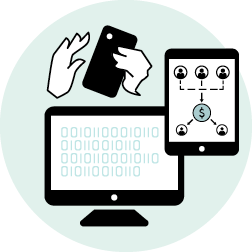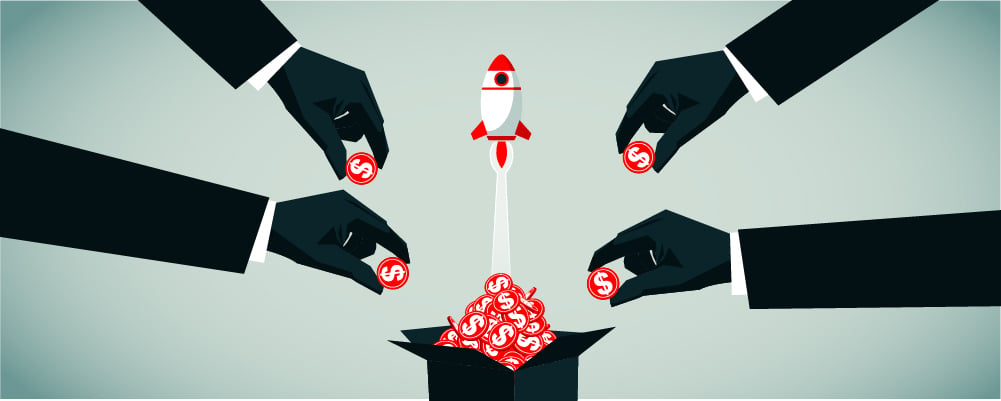In the last two years, many businesses have made the leap from paper checks to electronic payments completed via ACH. B2B use of ACH for vendor and supply chain payments rose 15% in Q4 2020, outstripping the overall increase in ACH payments for that quarter. This continues a trend that started two years ago, when for the first time fewer than half of B2B payments were made by check.
The next great leap in B2B payments? Experts think it may be the use of credit cards not just to make purchases, but to pay invoices.
According to PYMNTS.com research, 23% of AP professionals would like to integrate ePayables with virtual cards* into their B2B operations. Due to increased interest in card payments, the commercial credit card market could grow 10 percent annually through 2022, according to an Accenture forecast. B2B customer payments will drive that growth.
Electronic payments of every type offer advantages to businesses that accept them, including faster payments and a corresponding reduction in days sales outstanding. However, credit cards typically come with processing fees that are higher than ACH fees. But suppliers can reduce processing fees and offer the convenience of card payments to their business customers by understanding the factors that affect the cost of card processing, and, most notably, participating in Level 2 and Level 3 payment processing.
Greater Detail = Reduced Fees
Card networks apply interchange fees to transactions to cover handling, fraud, and bad debt. When it comes to interchange rates, there are three levels of data a merchant can provide:
| Level 1: Basic Retail |
Level 2: Order Detail |
Level 3: Comprehensive Line Item Detail |
| Account number |
Level 1 data, plus: |
Level 1 and 2 data, plus: |
| Authorized amount |
Sales tax indicator/ID |
Freight/shipping costs |
| Expiration date |
Sales tax amount |
Discount |
| Card Verification Value (CVV) |
Invoice number/customer code |
VAT |
| Zip code |
|
Line item description, quantity, unit, extended price, and more (specific data varies by card brand) |
The higher the level of data merchants and suppliers include with eligible transactions, the lower the risk, and that in turn reduces interchange fees.
Many businesses have a mix of consumers and businesses in their customer base, but the more a business is focused on B2B commerce, the more reason to take notice of interchange rates. Fees vary by card and transaction type, with business, corporate, and purchasing cards used in B2B and B2G transactions carrying some of the highest interchange fees. When you consider that B2B transactions can be high ticket purchases, providing Level 2 and Level 3 detail can make a significant difference in those fees.
For example, Visa and Mastercard offer programs that can reduce interchange fees for transactions that include Level 2 and Level 3 data. It applies only to those cards used in B2B and B2G transactions, so any merchant whose customers include a significant number of businesses or government entities should consider submitting enhanced data.
Bear in mind, not only do potential savings vary by card network, but the card networks each have slightly different data requirements to qualify for Level 3 savings. It’s also worth noting that if you have a flat or tiered pricing structure for payment processing, then these strategies may not apply to you. Because understanding and qualifying for Level 2 and Level 3 savings can be tricky, MerchantE offers an Interchange Optimization Program that helps merchants ensure the correct data is included so they qualify for savings on eligible transactions, regardless of the card brand.
Card-Using Businesses Benefit, Too
As businesses are recognizing the advantages of accepting electronic payments, including customer convenience and faster receipt of payments, the additional advantages of Level 2 and Level 3 interchange savings makes the adoption of card acceptance even more attractive. Level 2 and Level 3 data provides greater detail on transactions to the business, allowing for more effective budget and spend management and reporting. And card brands may offer additional benefits such as rental car insurance, corporate trip planning, global medical assistance, and cash rebates.
Using payment cards for B2B transactions benefits both sellers and buyers, and businesses that don’t accept them will likely delay receivables and miss out on sales and cost-saving opportunities. Given the anticipated increase in card use for business payments, Level 2 and Level 3 processing are important options for businesses that do B2B or B2G transactions – with benefits few can afford to ignore.
Ask about MerchantE’s program to help businesses qualify for interchange savings for B2B and B2G transactions.

* A virtual credit card uses temporary numbers to complete transactions online. They’re designed to protect actual account numbers from data exposure, breaches, and fraud.



